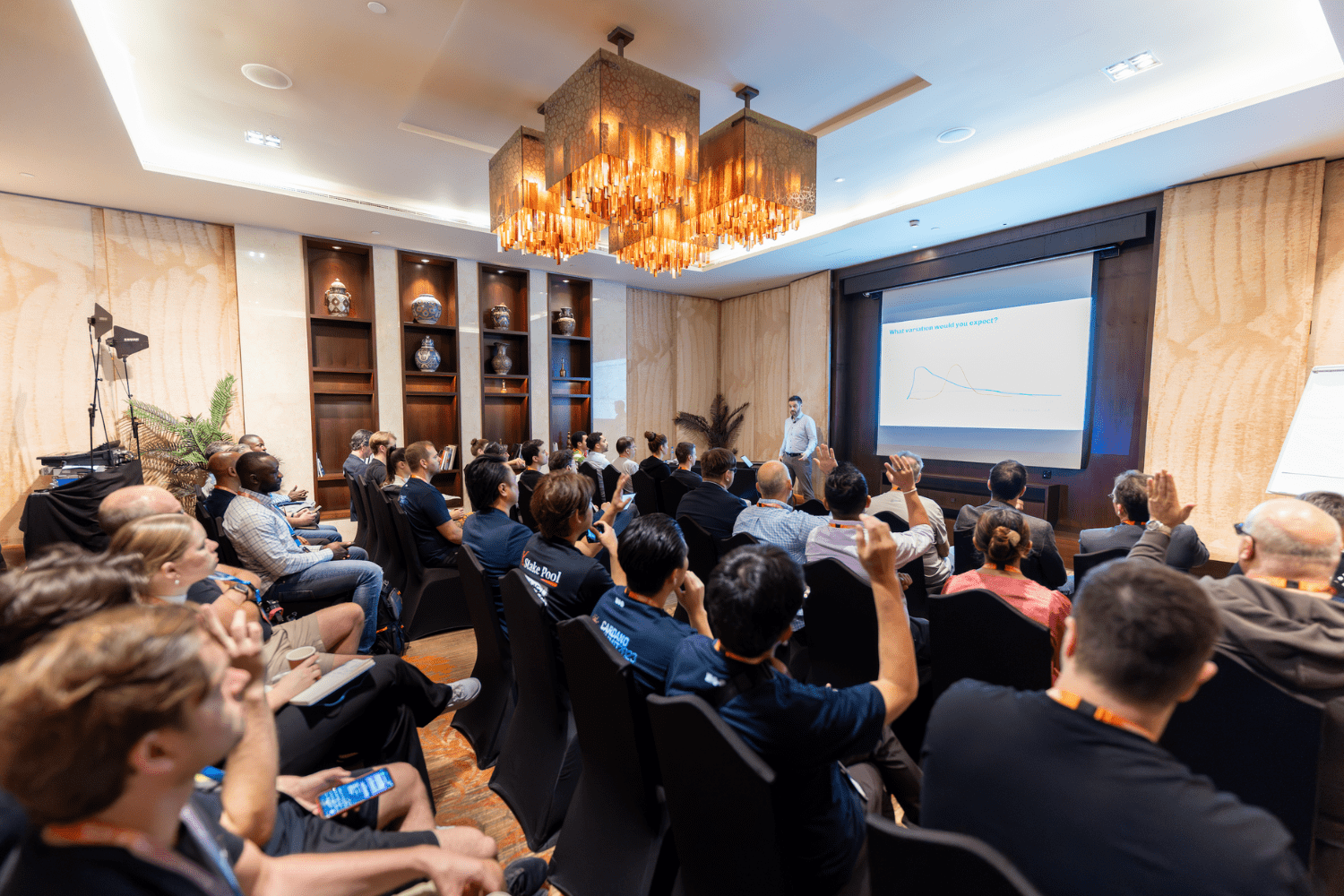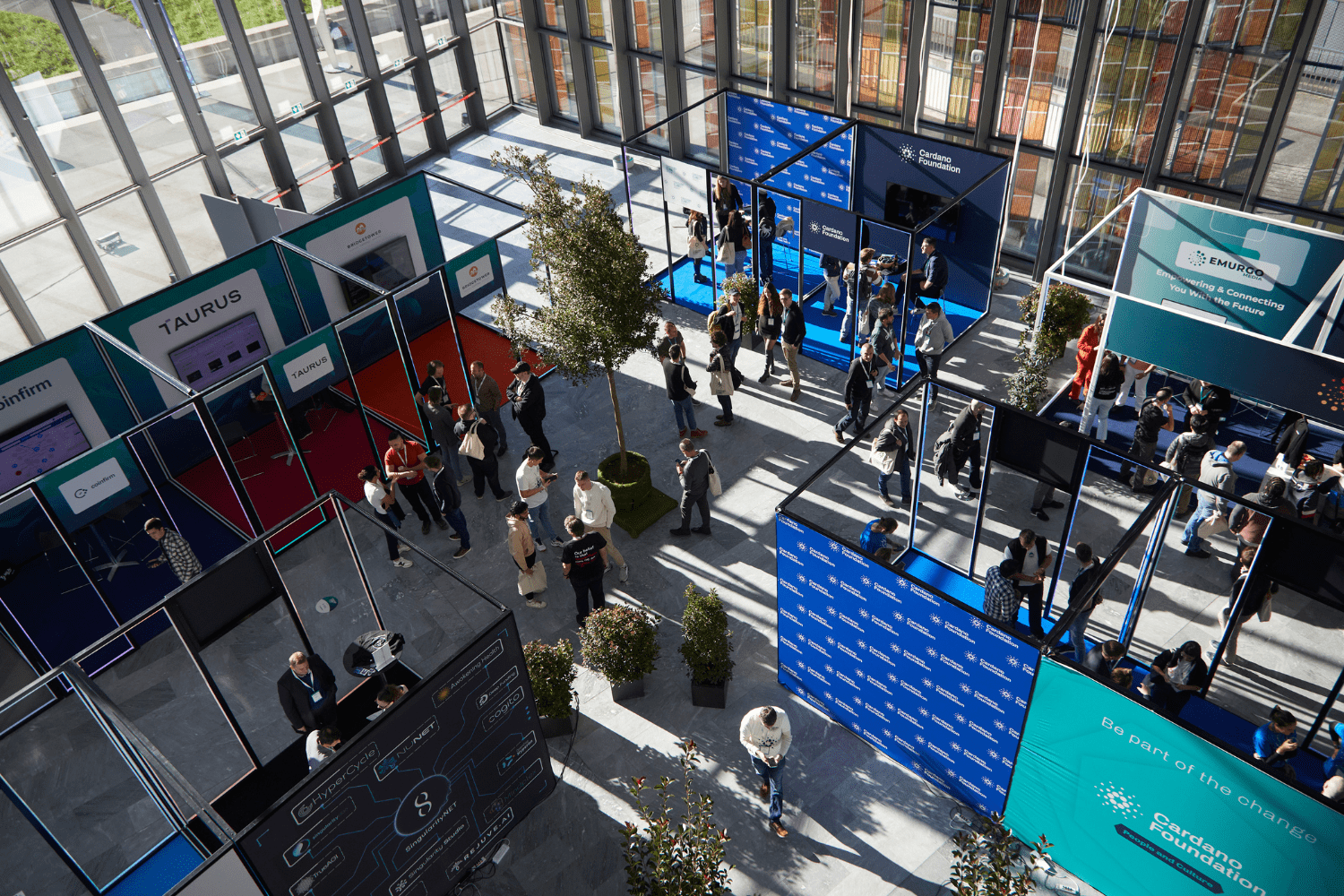 Back to News Room
Back to News Room
News

The types of virtual events explained
Face-to-face corporate events are widely used to bring people together and help organisers deliver clear communications that drive business goals.
However, the events industry is undergoing huge changes amid the global Coronavirus pandemic. Many large-scale events have been postponed or canceled altogether, in order to ensure the safety of everyone involved.
Given the current limits to travel and in-person interaction, we are seeing businesses pivot to virtual event solutions to support their continuity.
But what exactly are the different types of virtual events, and how can they be used as an alternative when physical events aren’t an option?
What are virtual events?
Virtual events are similar to in-person events in that they allow people to gather to share information and connect with one another. However, instead of meeting under one physical roof, virtual events take place in shared virtual environments online.
Hosting a virtual event still allows you to interact with attendees, share content, and create branded event experiences. You can even design virtual spaces that look and feel quite a lot like their traditional physical versions.
As well as smaller e-learning and meeting sessions, virtual event environments can also help you deliver large-scale events including conferences or summits, trade shows, and internal general meetings.
So, if you aren’t able to carry out a live in-person event, a virtual event can be a great alternative to gain the value of collaborating with your audiences in a convenient way.
Below we’ll look at the common types of virtual events and how to create seamless hybrid live and virtual event experiences.
Virtual conferences and summits
Virtual video conferences allow for live, interactive audio and visual collaboration with an online audience.
As with traditional conferences, virtual conferences and summits can include speakers, breakouts and keynotes sessions for targeted audience segments. A virtual conference platform can integrate with event websites and apps, to streamline registration, event promotion, and audience engagement.
Video conferences can also offer attendees downloadable or on-demand content, online networking experiences, and direct interaction with speakers through engagement tools like live polls or Q&As.
To find out more about the benefits of virtual conferences and how to host one, read our virtual conferences blog.
Webcasts events
A webcast event allows hosts to broadcast a media presentation online via streaming technology. Whether shared live or on-demand, a webcast would be streamed by a single host and distributed to the entire event audience at once.
As a recorded event, a webcast could be used for events that have large audiences where interaction between the host or audience members isn’t necessary. For example, a company-wide announcement from a key location or a product launch could be webcast to distribute important communications when a face-to-face event isn’t possible.
Live events like employee conferences can be webcast to those who couldn’t attend in person, and webcasts can also be embedded onto other sites or live streamed on channels like Facebook Live to maximise distribution.
Webinars and e-learning events
Webinars are similar to webcasts, in that the event is shared over the internet to an audience. However, a webinar does offer the opportunity for interaction. Attendees can actually become participants through online chat systems or over the phone, so that they can engage with speakers, presentations and other attendees.
Webinars can include multiple speaker hosts from multiple locations, as everyone is connected by their own computers or mobile devices. Though webinar events are interactive, they can be recorded and made downloadable for attendees to watch later.
Webinars were coined as online learning ‘seminars’, but they can be used for a wide range of events from training sessions to sales kick-offs.
Podcasts and online radio
If you are unable to produce visual content, or you want to make your live events available in different formats online, you may want to consider podcasts or internet radio streams.
Podcasts are becoming ever more popular, as they allow for on-demand listening to a range of audio material. Live internet radio streams can’t be paused or replayed like a podcast, but they also enable an online audio stream that can be played anywhere in the world.
A webcast or webinar could be streamed live on internet radio, or made available as a podcast afterwards, where attendees could download and listen to the event at a convenient time.
Live and virtual hybrid events
In many cases the immersive environment and interactive experiences created by physical events can’t be replaced by the virtual alternatives.
But if gathering a large audience into one place isn’t possible, making parts of a live event available as a virtual experience can have effective results.
For global offices that want to communicate with wider teams, hosting a hybrid event could enable companies to efficiently communicate and share important updates. The hosting team could stream part of their internal in-person event as an interactive webinar, or make the recorded version available as a webcast.
External summits or exhibitions could also set up virtual breakouts or activities to deliver a consistent learning and networking experiences simultaneously for hundreds or thousands of attendees.
Live streaming
A great way to create a hybrid live and virtual event is through live streaming. Live streaming simply streams digital content continuously, where it can be distributed and downloaded.
Live streaming can enable you to share the event as it unfolds, so the audience can feel like they’re in attendance. Live streamed in-person events can create exciting moments, such as promotional launches or announcements, for anyone online to enjoy. Turning your live events into virtual experiences
Whilst hybrid events are powerful tools to promote your event objectives, the unprecedented impact of COVID-19 means that some events may not be able to have any in-person aspect at all for the foreseeable future.
If you have an event coming up this year, you may be wondering whether your event will be able to continue as planned. That’s where switching your physical event to a virtual one, may be the best option if you’re faced with cancelling altogether.
Though it may be a challenge to cancel venues, travel arrangements, F&B, and other physical parts of the event, making your event agenda and material available virtually and setting up a virtual event system can be achieved.
A key task will be to update communications and alert attendees of the change to the event format. If you haven’t set up a virtual event before, it may be best to coordinate with an event agency who can help you choose the right systems, integrate with your event platforms, and manage attendee and speaker experiences.
If you’d like to know more about how to set up a virtual event, or you have an upcoming corporate event you need advice on, feel free to speak to one of our event managers. Head to our contact page to get in touch.









